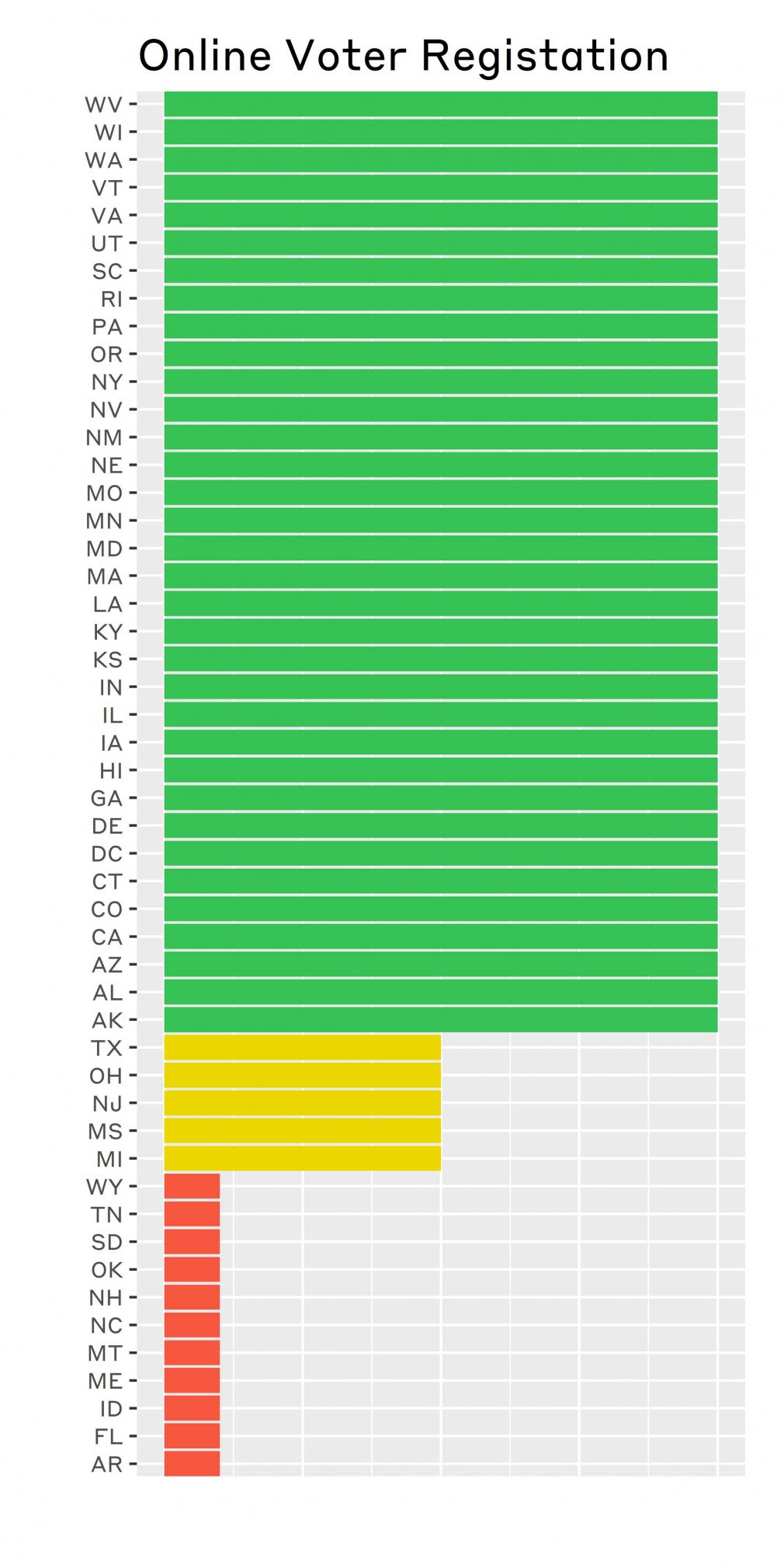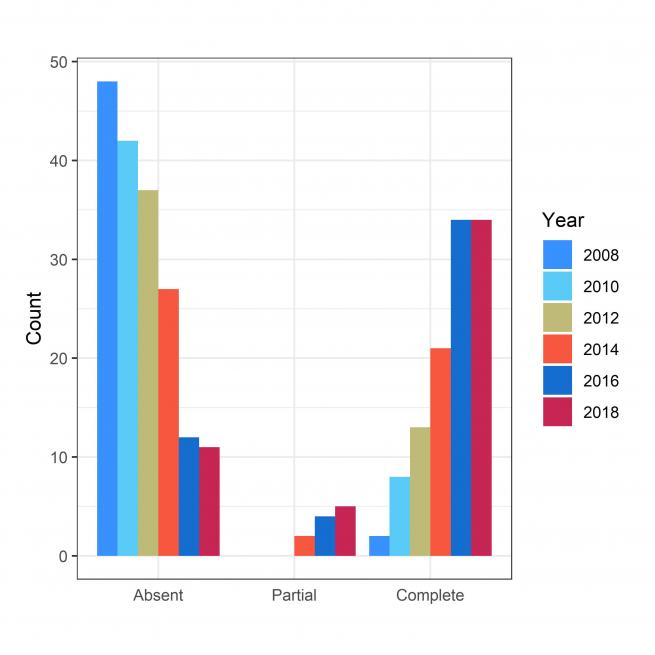It may, perhaps, seem mildly ridiculous to say aloud, but one of the most fundamental concepts underlying democratic elections is the idea that voters know who they are voting for.
In the U.S., each state decides what and how election information is offered, including how voters are able to access information on the candidates or issues they can vote for, and where they should go to vote. Increasingly, in this modern era, the internet has become a major platform to disseminate this information to voters, via online voter information lookup tools.
For each federal election since 2010, the Election Performance Index (EPI) has measured each state’s online voter lookup system by identifying whether that state provides voters the ability to view:
- verification of their voter registration
- a locator for their polling place
- a sample ballot for their precinct
- the status of their submitted absentee ballot
- the status of their submitted provisional ballot
The EPI gives a state one point for every time a feature is present, and zero otherwise; so states fall between a maximum score of five and a minimum score of zero for these indicators. To avoid penalizing states that don’t have certain features (such as registration or provisional ballots), they’re treated as if they do have that feature.
Reflecting the rise of the internet as an important medium of mass communication, 2018 saw another increase in the average value of this indicator. Indeed, every state at least provided information about polling locations online; the only states that did not provide online information status about registration either did not have registration (North Dakota) or had Election Day registration.
Why does the EPI focus on online look-up tools at all, let alone these five in particular? At the heart of the index is a commitment to measuring the accessibility and integrity of elections — and these tools tie right into that first metric. Most voters are already used to looking anything and everything up online, and are likely already searching for this information. By providing these tools on their website, election administrators can answer voter questions more efficiently and consistently, without becoming a significant time- or resource-burden.
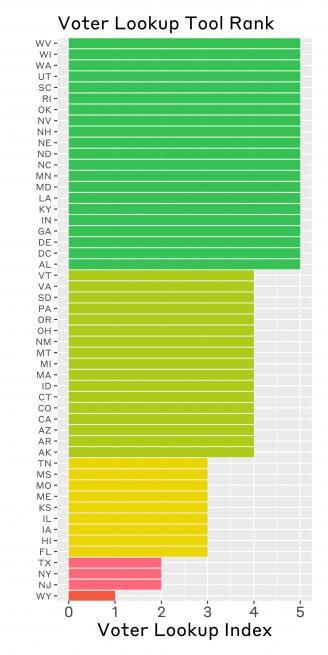
Voter lookup tool rank by state

Voter lookup tool rank by state
Overall, in 2018 there were 21 states with every tool on their website. Seventeen states had four of the five tools; nine states had three; three states had just two. Only one state featured a single tool on their website. These data suggest that all 50 states (plus DC) have an online presence to aid voters in elections, with a plurality providing all of the tools. When we look at population, most American voters live in states with four of the five features, (approximately 37% of the population). About 27.5% of the population lives in states with all five of the tools on their websites; 18% are able to access three tools on their state websites; and 17% can access two of the tools — meaning a sizable portion of the U.S. population still has limited access to the full suite of lookup tools.
Progress Made
While certainly there is room for improvement, states have made a significant amount of progress. The quality and number of the lookup tools states provide to their voters has improved each year — just look at the chart below. Overall, states have added more voter lookup tools to their websites, with a dramatic jump between 2014 and 2016 (when, for the first time, a plurality of states offered all five lookup tools to their voters). Between 2016 and 2018, there was a less drastic improvement, but overall states did continue to offer more tools to their voters.
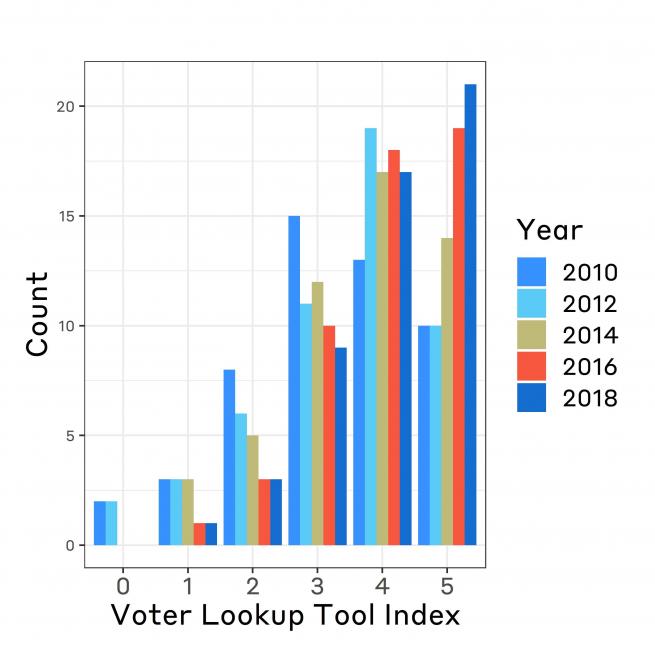
Voter lookup tool counts by year.
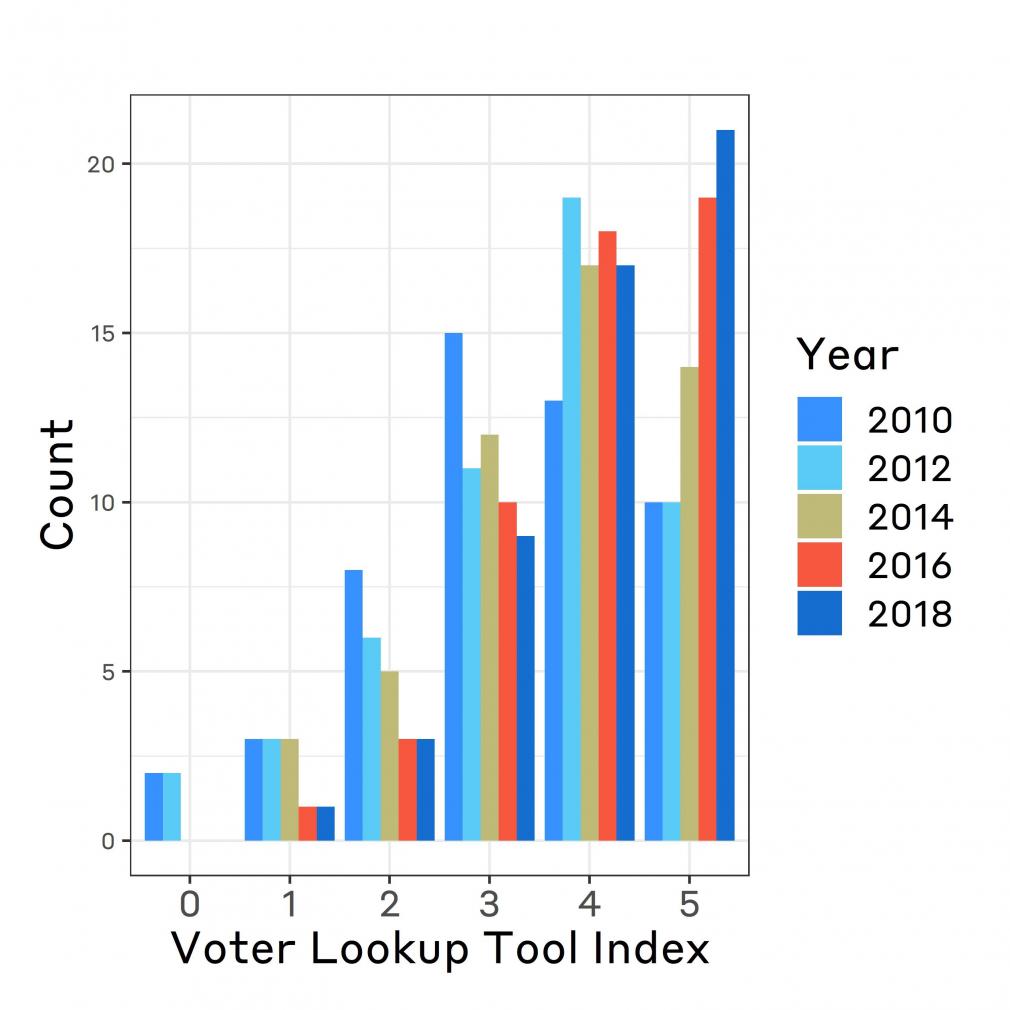
Voter lookup tool counts by year.
It is also interesting to see which states have improved the most in offering lookup tools. The map below shows the changes in tool quality/quantity from 2014 to 2018. States in yellow maintained a constant number of tools; states in red backslid; while states in green improved. We can see that from 2014, most states stayed the same in quality/quantity of voter lookup tools. However, there are states that improved significantly, including — most notably — California and Vermont, though New Mexico, Kentucky, and Ohio also had marked improvements. Alabama, Alaska, Arkansas, Connecticut, Mississippi, Nebraska, Nevada, New Hampshire, Pennsylvania, West Virginia, Washington and the District of Columbia also improved, though less dramatically. On the other side of things, the states of Maine, New Jersey and Virginia have removed voter lookup tools since 2014.
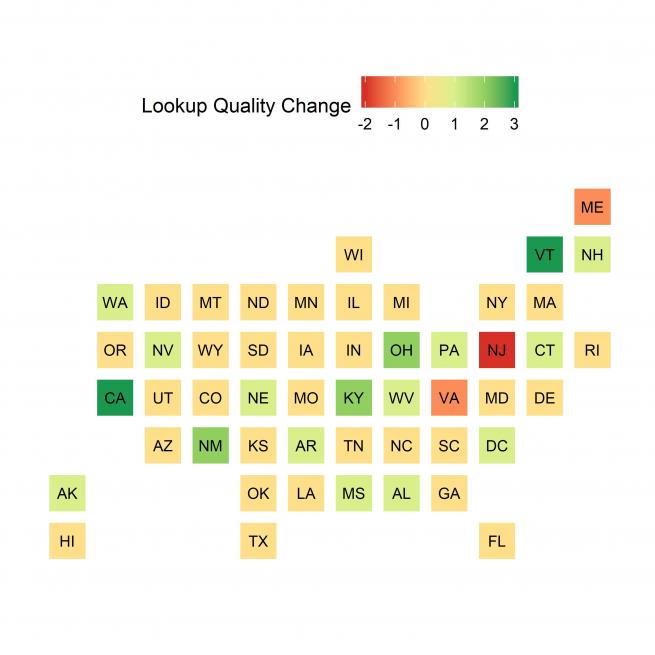
Cartogram of voter lookup tools

Cartogram of voter lookup tools
Online Voter Registration
The EPI also considers whether states provide the option for voters to register online. Similarly to offering lookup tools, the ability to register to vote online can improve the efficiency and performance of elections. Online registrations can help states streamline the registration process, improve the accuracy of voter lists, and reduce the need for duplicative data entry into state voter databases.
The EPI includes an ordinal measure of the availability of online voter registration. A state that has fully implemented online voter registration is given a score of 1. A state that permits voters who are already registered to update their registration online receives a score of 0.5. A state lacking any online registration features receives a score of 0.
As can be seen in the figure below, in 2018 most states made use of full online voter registration, while Texas, Ohio, New Jersey, Mississippi, and Michigan permitted already-registered voters to update their registration online. A few of the states without OVR also have Election-Day registration, so that the opportunity to register online perhaps isn’t as important as in other states.
We’ve also taken a look at the change over time in online voter registration — as you’ll see in the chart below. The biggest shift in online registration occurred between 2014 and 2016: in 2014, only 21 states offered online voter registration, while in 2016, 34 states had added it to their websites.
As of 2018, the number of states offering online registration has largely stabilized, capping out at 34. The only change between 2016 and 2018 is that Mississippi began allowing already-registered voters to update their registration online. That leaves approximately 15.8 percent of the American population living without the ability to register online. While there is still room to improve access to registration for a large portion of U.S. voters, the overall trend since the EPI began has been one of significant improvement.
In aggregate, it is important to note that these measures are rough indicators of the ways online resources can improve the efficiency and integrity of elections. In addition, although state websites may be lacking some online features, oftentimes local-jurisdiction websites will offer those features, especially in the larger counties. Some state websites may offer users a better experience than others, even if they are categorized as effectively equal for voter lookup tools or online voter registration. But the presence of lookup tools or online voter registration are important features to consider as we continue advancing and improving election administration and access to the 21st Century.


